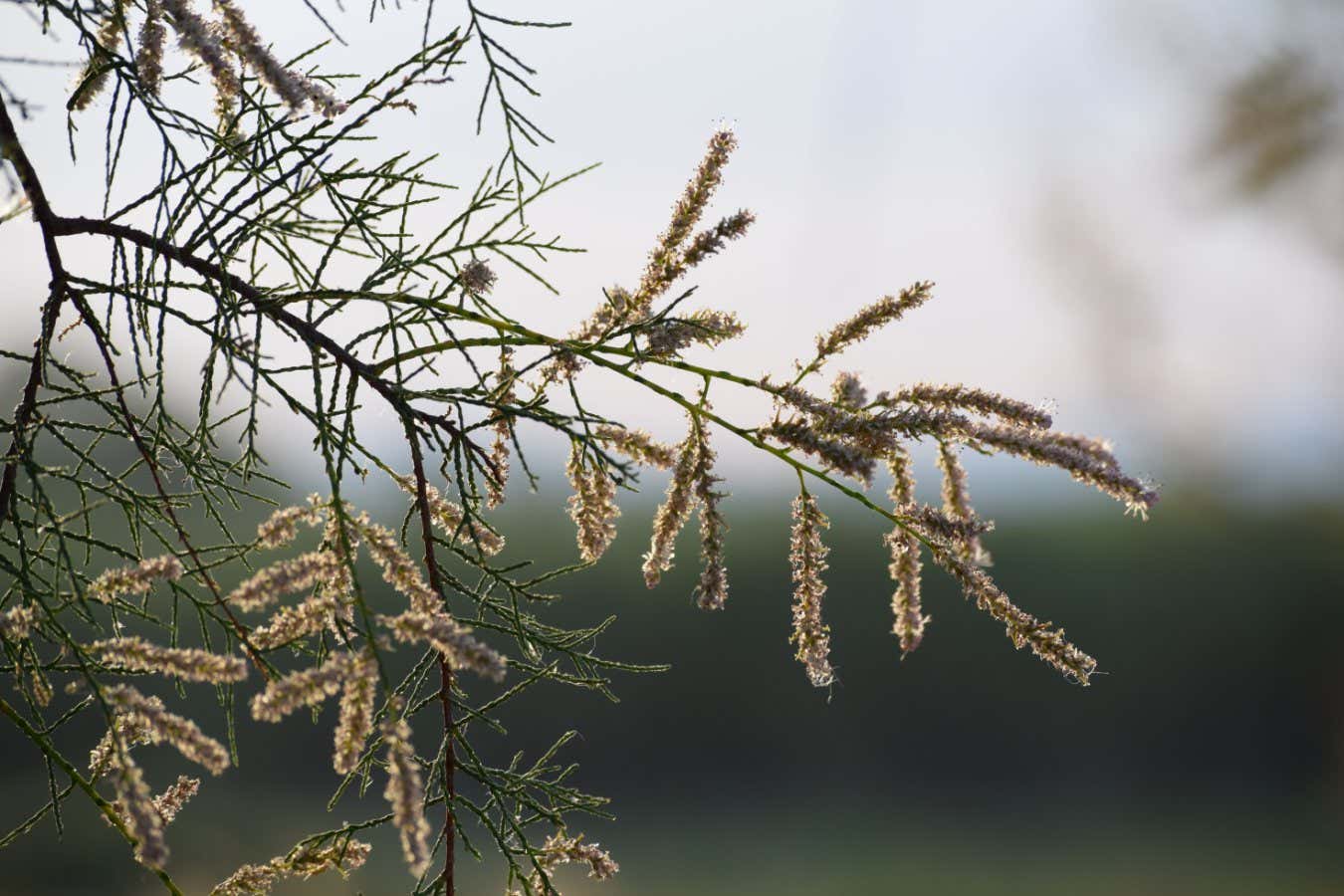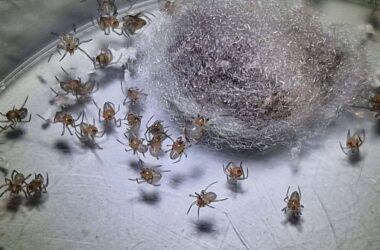An evergreen desert shrub called the Athel tamarisk has developed a remarkable survival technique for living in dry climates. It excretes salt crystals onto its leaves, which may help the plant absorb moisture from the air.
The Athel tamarisk, also known as Tamarix aphylla, is part of a group of plants known as recretohalophytes. These plants have adapted to thrive in extremely salty soil. They take in saline water through their roots, using it for nourishment and then excreting the remaining concentrated salty water onto their leaves.
A research team led by Panče Naumov at New York University Abu Dhabi studied what happens to the water excreted by the plant. Initially, they believed that the droplets might fall onto the plant’s roots to water them. However, close observation through time-lapse videos revealed that the droplets actually stick to the surface of the leaves.
The researchers collected samples of the salt crystals left behind on the tamarisk’s leaves throughout the year and analyzed them using X-ray analysis. The samples were found to mostly contain sodium chloride, along with more than ten different salt compounds.
To understand how the salt stayed on the surface of the leaves, the team created a model using wax extracted from the tamarisk plant. They discovered that while larger crystals easily fell off the surface, smaller lithium sulphate crystals remained stuck. It was observed that the salt with lithium sulphate crystals absorbed water across a wider range of humidity than sodium chloride alone.
This suggests that the plant may employ two mechanisms for obtaining water from salty soils. During the hotter, drier days, it takes in water through its roots. Then, during the cooler, more humid nights, it uses the excreted salts on its leaves to absorb water from the air. Naumov describes these mechanisms as working in synergy, day and night.
While Maheshi Dassanayake at Louisiana State University finds this mechanism plausible, she questions the researchers’ evidence regarding how the plant uses the water absorbed by the salt on its leaves.
Regardless, even if the plant doesn’t directly benefit from the water harvested through this process, the salt compounds could have potential applications in water harvesting systems or cloud seeding to induce rainfall.
Topics:








